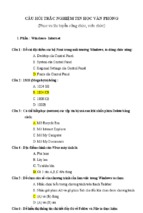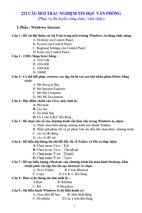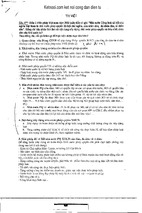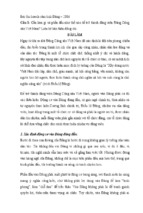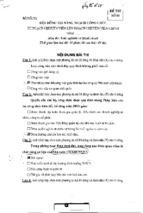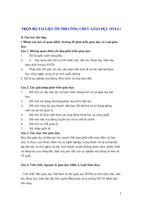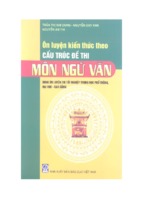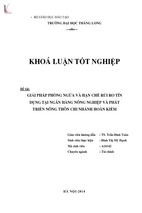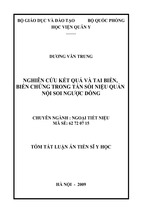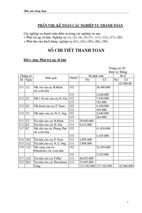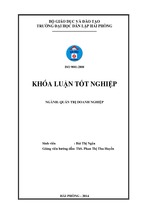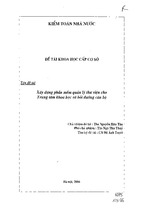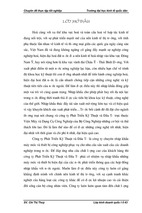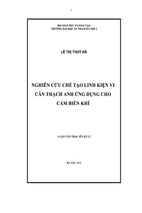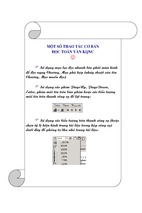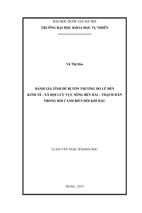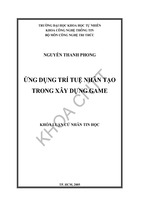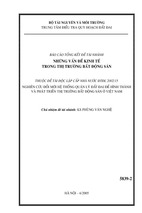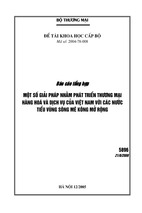Routing Information Protocol
Mattias Jansson, KTHNOC
[email protected]
February 4, 2004
1
Contents
1
General
3
2
The Distance-Vector Protocol
4
2.1
The Distance-Vector
. . . . . . . . . . . . . . . . . . .
5
2.2
Bellman-Ford’s algorithm . . . . . . . . . . . . . . . . .
6
2.3
Route update example
7
2.4
Count-to-Infinity problem
3
. . . . . . . . . . . . . . . . . .
. . . . . . . . . . . . . . . .
12
RIP’s implementation of DV
13
3.1
The Concept of Infinity . . . . . . . . . . . . . . . . . .
14
3.2
Split Horizon
. . . . . . . . . . . . . . . . . . . . . . .
15
3.3
Split Horizon with Poisoned Reverse . . . . . . . . . . .
16
3.4
Triggered Updates . . . . . . . . . . . . . . . . . . . . .
18
2
3.5
19
3.6
RIP’s timers . . . . . . . . . . . . . . . . . . . . . . . .
20
3.6.1
RIP’s counters- according to the RFC . . . . . .
21
3.6.2
4
Flash Updates . . . . . . . . . . . . . . . . . . . . . . .
RIP’s counters- according to Cisco . . . . . . . .
22
RIP protocol details
23
4.1
RIPv1 . . . . . . . . . . . . . . . . . . . . . . . . . . .
24
4.1.1
. . . . . . . . . . . .
25
RIPv2 . . . . . . . . . . . . . . . . . . . . . . . . . . .
26
4.2.1
27
4.2
RIPv1 header explanation
RIPv2 header explanation
. . . . . . . . . . . .
5
Some limitations in RIP
29
6
So why use RIP?
30
3
1
General
• Routing Information Protocol
• RIP is an implementation of the Distance-Vector
protocol.
• RIP uses the Bellman-Ford Algorithm to calculate
its routes.
• Bellman 1957, Ford and Fulkerson 1962
• RIPv1 is specified in RFC 1058
• RIPv2 is specified in RFC 2453
4
2
The Distance-Vector Protocol
• RIP uses the Bellman Ford Algorithm to calculate
the network topology.
• Each router sends a list of distance-vectors each of
its neighbours periodically.
• The metric must be a positive integer. This metric
measures the cost to get to the destination. In RIP,
this cost describes number of hops.
5
2.1
The Distance-Vector
A distance-vector is a vector containing the following
elements (destination, cost, source) where:
• destination is the destination network
• cost is the sending router’s metric to the
destination + 1
• source is the sending router’s id.
One distance-vector is created for each entry in the
routing table, and the entire set of distance-vectors are
sent periodically.
6
2.2
Bellman-Ford’s algorithm
BELLMAN-FORD(G, w, s)
; Given a graph G, a weight function w,
; and a source node s
for each vertex v in V[G]
; For every node v in G
d[v] := inf
; Set distance to v to a large number
p[v] := nil
; Set parent of v to nil
d[s] := 0
; Set the source’s distance to itself to 0
for each vertex in V[G]
; For every node v in G
for each edge (u,v) in the set E[G] ; for all edges
if d[v] > d[u] + w(u, v)
; if the distance to a node can be updated
d[v] := d[u] + w(u, v)
; update the v’s distance
p[v] := u
; update the v’s parent
p[v] is used to build the tree, d[v] contains the cost to
get to v. This version of Bellman-Ford is adapted for a
weighted, directed, non-negative graph. This algorithm
runs at O(|V ||E|).
7
2.3
Route update example
• At cold start each router knows only its own
directly connected nets
• The cost to directly connected nets are 0
RTA
Dest Cost
a
0
Via
RTB
Dest Cost
Via
-
b
-
0
8
RTC
Dest Cost
Via
Route update example
(con’t)
• After each router has made one update
RTA
Dest Cost
Via
RTB
Dest Cost
a
b
Via
RTC
Dest Cost
Via
0
-
b
0
-
b
1
rtb
1
rtb
a
1
rta
a
1
rta
9
Route update example
(con’t)
• After each router has done two updates
RTA
Dest Cost
a
Via
RTB
Dest Cost
0
-
b
b
1
rtb
b
1
a
Via
RTC
Dest Cost
Via
0
-
b
1
rtb
a
1
rta
a
1
rta
rtb
a
1
rta
b
1
rtb
2
rtb
b
2
rta
a
2
rtb
b
2
rtc
b
2
rtc
a
1
rta
a
2
rtc
a
2
rtc
b
2
rta
10
Route update example
(con’t)
• The newly arrived distance-vectors
(destination/cost/source) are checked against the
current routing table:
– A dest that has no match in the table is unique
and is added.
– If the dest matches an entry it must replace it iff:
∗ . . . the source is the same.
or
∗ . . . the source is different and the cost is better.
11
Route update example
(con’t)
• The final table is achieved. Yay!
RTA
Dest Cost
a
b
Via
RTB
Dest Cost
0
-
b
1
rtb
a
Via
RTC
Dest Cost
Via
0
-
b
1
rtb
1
rta
a
1
rta
• But is it really this simple?
12
2.4
Count-to-Infinity problem
• Network a becomes unreachable, and RTA sends out (a inf rta)
to its neighbours.
• Since there is a timing issue here, the following can occur:
– RTA sends (a inf rta) to RTB and RTC
– RTC updates its table to (a inf rta)
– Before RTB has received (a inf rta), RTC sends (a 2 rtc) to
RTB and RTA causing them both to update their tables
– RTC receives the original (a inf rta) from RTA
– This can cause all routers to spread the poisonous entry until
it reaches infinity in all routers.
13
3
RIP’s implementation of DV
• RIP needs to deal with some of the shortcomings of
Distance-Vector protocols.
• These are:
– Infinity
– Split Horizon and Poison Reverse
– Triggered Updates
– Timers
14
3.1
The Concept of Infinity
Counting to infinity can take a long time.
Thus infinity is set to something not quite as eternal as
infinity, namely 16.
This limits the diameter of the routing domain to 15,
and also makes counting to infinity a little faster.
15
3.2
Split Horizon
With Split Horizon activated, a router omits sending
routes back to the router it learned them from.
This helps in avoiding a process of mutual deception,
where two routers tell each other that they can reach
destination X via each other.
Split Horizon MUST be supported by all running
versions of RIP.
16
3.3
Split Horizon with Poisoned Reverse
With this scheme activated, a router behaves in the
same way as in plain Split Horizon, but instead of not
sending information back, it sends a route update with
a metric of 16 (unreachable) to the router it got the
route from.
Split Horizon with Poisoned Reverse SHOULD be
supported in all implementations of RIP, though it is
legal to have a knob to turn it off.
17
Split Horizon with Poisoned Reverse
(con’t)
In a network with two routers, we have now eliminated
routing loops.
However, in a situation with three, fully meshed routers,
we still can get loops.
Can we avoid this?
18
3.4
Triggered Updates
No. But we can minimize the probability of a
Count-to-Infinity using triggered updates.
• Triggered Update means that an incoming update
message triggers the router to make its own update.
RIP does its updates by sending out its
distance-vectors to all its neighbours.
19
3.5
Flash Updates
• On a Cisco box, a router that cold-starts broadcasts
a request packet to all its neighbours. Every
neighbour responds by immediately unicasting a
reply containing its distance-vector.
• In Cisco-ese, this functionality together with the
normal triggered update functionality is called a
Flash Update.
20

